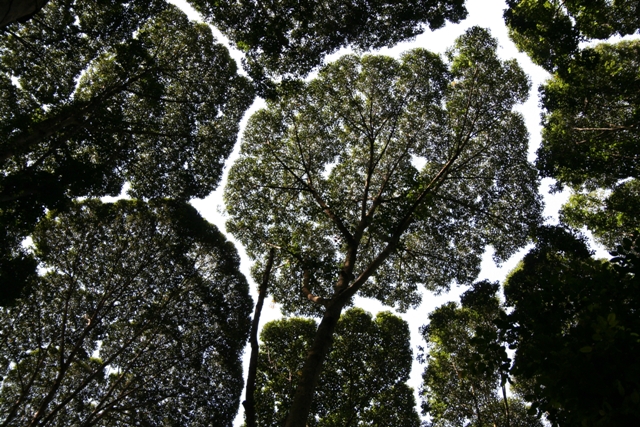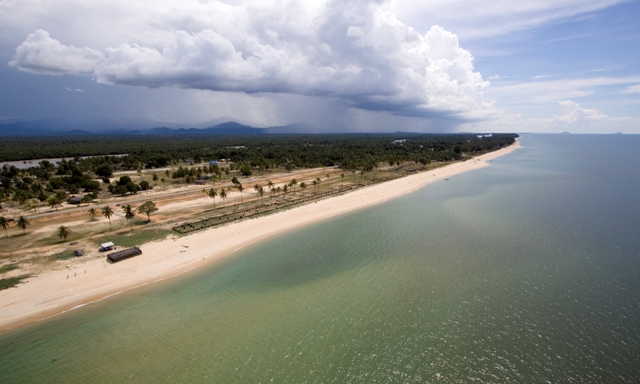Expats keen to get closer to nature and give something back to their new home should look no further than the world wide fund for nature-Malaysia, where contributions are always welcome.
Living in Malaysia is exciting, but it can also be very rewarding for expats. You might wonder: Where to start? How to get involved? Which organisation needs support? Expats need look no further than WWF-Malaysia (World Wide Fund for Nature-Malaysia), where there are many unique options for enthusiastic expats interesting in getting involved.
WWF-Malaysia’s conservation efforts stretch far beyond protecting species, and interested parties are able to learn more about WWF-Malaysia’s conservation works by paying a visit to one of their project sites before making a decision to get involved.
What is WWF-Malaysia?
WWF-Malaysia runs more than 90 projects and employs over 200 people throughout Malaysia, and is part of the WWF family established in 1961. WWF is one of the world’s largest and most influential international nature conservation organisations, comprising over 5 million regular supporters and a global network active in 100 countries.
WWF’s conservation work in Malaysia focuses on conserving species of global concern (such as the orangutan, tiger, elephant, rhinoceros, and the different species of marine turtles); addressing threats to forests, freshwater, and marine ecosystems; environmental education; and environmental policy and advocacy.
The group currently has four projects under their Partner in Conservation Programme, all of which can be visited for a first-hand experience of Malaysia’s amazing biodiversity and to have an opportunity to take part in the conservation process.
Conservation Sites
Belum-Temengor Forest Complex in northern Perak is home of the Malayan Tiger and a land area encompassing 354,600 hectares. There are only around 500 Malayan tigers living in Peninsular Malaysia, mainly in Kelantan, Terengganu, Perak, and Pahang. The entire Belum-Temengor Forest is older than the Amazon and Congo and is believed to have existed for over 130 million years, making it one of the world’s oldest rainforest. Melaka Hawksbill Turtle Sanctuary in Padang Kemunting, Melaka, is home to the largest nesting population of the hawksbill turtles (Eretmochelys imbricate) in Peninsular Malaysia. This critically endangered species is one of the four extant in Malaysia, and rapid coastal development is a huge threat, decimating prime nesting habitat to just a few beaches. On average, 400 nestings are recorded annually, and the best time for a visit is between July and September.
Fraser’s Hill, the crown of the Titiwangsa range, raises 1,200m above sea level and straddles the Pahang-Selangor border. It is one of the six major upland rainforest areas (often known as “hill stations”) in Peninsular Malaysia that are frequently visited, and is surrounded by pristine highland forests on steep terrain. The hill area provides important ecological functions and is a major water catchment area, being the source of two large river systems: Sungai Pahang and Sungai Selangor. The fauna living in the Fraser’s Hill ecosystem represents 62.7% of the mammal species and 88.4% of the birds species living in Peninsular Malaysia’s highland areas. The flora of Fraser’s Hill comprises at least 836 seed plant species, with 36 of these endemic to Fraser’s Hill.
Setiu Wetlands, in Terengganu, is located within the Setiu-Chalok-Bari-Merangriver basin and home to Malaysia’s largest breeding population of painted Terrapin (Callagur borneoensis). The sandy beaches here are also amongst the few remainingmainland nesting sites for the green turtle (Chelonia mydas), and both speciesare endangered. The Setiu Wetlands isunique in that the coastal lagoon and rich matrices of habitats host a remarkablecommunities of species not found in the dominant dipterocarp forests of the inland part of Terengganu. The best time to visitis between April and September.
Why Visit?
By visiting the sites listed above, expatshave the opportunity to directly experience how their contribution could help bring a long term solution for the environment, no matter where they call home.
Any contribution goes a long way, as the work and assistance of volunteers is essential to the enhancement of WWF-Malaysia’s conservation efforts and works at the field sites. WWF-Malaysia’s success depends on the support of individuals and organisations that are passionate, innovative, and committed to tackling Malaysia’s (and the world’s) biggest environmental challenges and to respond to a looming environmental crisis.
There is an urgent need for governments, individuals, businesses, and environmental organisations to work together, as the escalating environmental problems of today’s world require understanding and immediate attention. Not only does any contribution greatly benefit the organisation, the country, and the natural environment, it is also a hugely rewarding and fascinating experience for all involved.
———————————————————————————————————
To learn more about the Partner in Conservation Programme, please contact:
WWF-Malaysia
(Peninsular Office – HQ)
49, Jalan SS23/15, Taman SEA,
47400 Petaling Jaya, Selangor, Malaysia
T: 03. 7803 3772
F: 03. 7803 5157
W: www.wwf.org.my; www.facebook.com/wwfmy
E: [email protected];
Corporate Relations Team [email protected]
———————————————————————————————————
WWF-Malaysia
WWF-Malaysia (World Wide Fund for Nature-Malaysia), the national conservation trust, currently runs more than 90 projects covering a diverse range of environmental protection work. Since 1972, WWF-Malaysia has worked on important conservation projects, from saving endangered species (such as tigers and turtles), to protecting the highland forests, rivers, and seas. The group also undertakes environmental education and advocacy work to achieve conservation goals. By conserving natural resources, WWF-Malaysia is helping to protect livelihoods, food, and the water supply, thus securing a good quality of life and a bright future for the generations to come.
Mission
WWF’s mission is to stop the degradation of the planet’s natural environment and to build a future in which humans live in harmony with nature by :
Conserving the world’s biological diversity
Ensuring that the use of renewable natural resources is sustainable
Promoting the reduction of pollution and wasteful production
———————————————————————————————————
Source: The Expat April 2013
Read more:
- Malaysian Artist Profile: Jeff Jansen
- Fear Factor Malaysia
- Berjaya Times Square Theme park (Cosmo’s World Theme Park)
What are your thoughts on this article? Let us know by commenting below.No registration needed.
"ExpatGo welcomes and encourages comments, input, and divergent opinions. However, we kindly request that you use suitable language in your comments, and refrain from any sort of personal attack, hate speech, or disparaging rhetoric. Comments not in line with this are subject to removal from the site. "






















